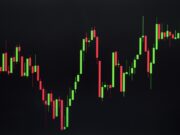
In the bustling financial district of New York City, Sarah, a young and ambitious trader, had always been intrigued by the world of options trading. She had heard stories of traders making significant profits, but also tales of those who faced substantial losses. One day, after attending a seminar on options, Sarah decided to dive into this world, armed with knowledge and a thirst for success. As we journey through this guide, we’ll follow Sarah’s footsteps, exploring the intricacies of options trading and understanding its potential benefits and risks.
1. What are Options?
What are Options?
Options are sophisticated financial instruments that derive their value from an underlying asset, such as a stock. They provide traders and investors with the flexibility to generate profits, hedge existing positions, or speculate on the direction of an asset without owning it directly.
Types of Options: There are two primary types of options:
- Call Options: These give the holder the right, but not the obligation, to buy an underlying asset at a predetermined price within a specified timeframe. Investors buy call options when they anticipate the price of the underlying asset will rise.
- Put Options: These grant the holder the right, but not the obligation, to sell an underlying asset at a predetermined price within a specified timeframe. Investors purchase put options when they believe the price of the underlying asset will decrease.
Options Contracts: An options contract typically represents 100 shares of the underlying stock. The price you pay for an option, known as the premium, is essentially the cost of the leverage and protection the option provides. The predetermined price at which the option can be exercised is called the strike price.
Expiration and Time Value: Options have an expiration date, which means they are time-sensitive. As the expiration date approaches, the time value of the option decreases, which can impact the profitability of an options trade. This phenomenon is known as time decay. It’s crucial for traders to be aware of the expiration date and understand the implications of time decay on their positions.
2. Setting Up an Options Account
For Sarah, the first step was to set up an options trading account:
- Choose a Brokerage: Research and select a brokerage firm that offers options trading. Ensure they have a good reputation and offer educational resources.
- Application Process: Fill out an application, providing details about your financial situation and trading experience.
- Risk Assessment: The brokerage will assess your risk tolerance and assign a trading level based on your experience and financial situation.
- Fund Your Account: Deposit the required minimum amount to start trading.
3. Why are Options Useful?
Options offer several advantages:
- Leverage: Control a larger position with a smaller amount of capital.
- Hedging: Protect your portfolio from potential losses.
- Flexibility: Multiple strategies can be employed based on market conditions.
- Income Generation: Earn premium by selling options.
4. Stock Trades vs. Options Trades: A Comparative Analysis
Let’s consider a hypothetical scenario where Sarah believes that the stock of Company XYZ, currently trading at $50, will rise in the next month.
Stock Trade:
- Sarah buys 100 shares at $50 each, costing $5,000.
- After a month, the stock rises to $55.
- Sarah’s profit: ($55 – $50) x 100 = $500.
Options Trade:
- Sarah buys a call option for XYZ with a strike price of $52, paying a premium of $2 per option for 100 options, costing $200.
- After a month, the stock rises to $55.
- Sarah exercises her option, buying at $52 and selling at $55.
- Sarah’s profit: ($55 – $52 – $2) x 100 = $100.
In this scenario, the stock trade outperformed the options trade. However, options can outperform stocks in volatile markets, especially when leveraging is employed.
5. Top 3 Options Tickers by Daily Volume
(Note: The following tickers are hypothetical and for illustrative purposes only.)
- AAPL (Apple Inc.)
- Daily Volume: 1.5 million contracts
- Average Strike Price: $150
- Implied Volatility: 25%
- TSLA (Tesla Inc.)
- Daily Volume: 1.2 million contracts
- Average Strike Price: $700
- Implied Volatility: 30%
- AMZN (Amazon Inc.)
- Daily Volume: 900,000 contracts
- Average Strike Price: $3,500
- Implied Volatility: 20%
Conclusion: Sarah’s Journey
As Sarah delved deeper into options trading, she realized the importance of continuous learning and risk management. While she faced some losses, her wins were significant, teaching her the power of options. Whether you’re a novice or an expert, options trading offers a world of opportunities, but it’s essential to approach it with knowledge and caution.
Where to invest $500 Right Now?
Before you consider buying any of the stocks in our reports, you’ll want to see this.
Investing legend, Marc Chaikin just revealed his #1 stock for 2024…
And it’s not in any of our reports.
During his career of nearly 50 years, Marc Chaikin was one of the quantitative minds behind some of the most famous investors in history: Paul Tudor Jones, George Soros, Steve Cohen, and Michael Steinhardt.
Even the Nasdaq hired him to create three new indices.
And now he’s going live with his #1 pick for 2024.
You can learn all about it on Mr. Chaikin’s Website, here.
Wondering what stock he’s investing in?
Click here to watch his presentation, and learn for yourself…
But you have to act now, because a catalyst coming in a few weeks is set to take this company mainstream… And by then, it could be too late.
Click here to reveal the name and ticker of Marc Chaikin’s no. 1 pick for 2024…
You might also like:
- A.I. Gamechanger Says “$2.50 Stock Set to Breakout Overnight”
- Mysterious Gold Leverage Just Announced
- Elon’s New A.I. Device is About to Shock the World
- Prepare Now Before This Looming $2 Trillion D.C. Shock
- Buy Elon Musk’s New $1 Play before June 30
- Write this ticker symbol down…
- The Crypto Melt-Up has Begun
- “A.I. is a Tidal Wave” – Here’s What to Buy
- Beware Executive Order 14067
- #1 AI Stock for 2024 and Beyond





















